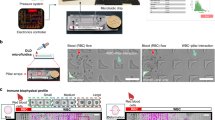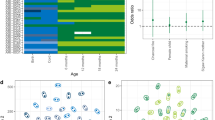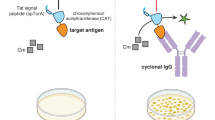Abstract
ABSTRACT. We evaluated the formation of specific and functional antibody in preterm infants born weighing less than 1500 g (mean 1088 g) and less than 32 wk gestational age (mean 28.8 wk). Plasma IgG antibody against tetanus and diphtheria toxoids were measured by an enzyme-linked immunosorbent assay. Opsonic activity of heat-inactivated plasma was measured using radiolabeled bacteria, adult polymorphonuclear leukocytes and exogenous human complement. In the presence of complement, the strain of coagulase negative staphylococcus used was opsonized by IgG antibody, and the strain of Escherichia coli by IgM. Geometric mean plasma levels of tetanus and diphtheria IgG antibody fell from birth to 4 months chronological age, but rose significantly by 9 months (approximately 2 months after the third dose of diphtheria, tetanus, pertussis vaccine). However, at 9 months they remained lower than the respective geometric mean levels in 9-month-old term infants (tetanus: p < 0.001; diphtheria: p = 0.02). The preterm infants' mean plasma IgG staphylococcal opsonic activity fell from birth to 2.5 months, but by 9 months was comparable to that of term infants of the same age. Mean IgM opsonic activity for E. coli was very low at birth in both preterm and term infants. It rose with chronological age, correlating with the rise in total IgM (r = 0.48, p < 0.001) and by 9 months the mean preterm and term infants' levels of IgM opsonic activity for E. coli were comparable. In the newborn period, the preterm infants' levels of plasma IgG tetanus and diphtheria antibody, but not IgG staphylococcal opsonic activity, correlated with their mothers' levels (tetanus: r = 0.84, p < 0.001; diphtheria: r = 0.86, p < 0.001; staphylococcal: r = 0.17, p = 0.38). Placentally transferred maternal tetanus, diphtheria, and opsonic staphylococcal IgG antibody did not inhibit the infants' subsequent antibody responses to the respective antigens. We conclude that the ability of preterm infants to form specific and functional antibody may place them at lower risk for infection than might be expected from their very low plasma levels of total IgG and IgM antibodies. In addition, the good correlation between newborn and maternal plasma levels of IgG antibody to tetanus and diphtheria toxoids, but not IgG-dependent staphylococcal opsonic activity, suggests preferential transport of some IgG antibodies across the placenta or, alternatively, that the function of some IgG antibodies may be impaired by placental transport.
Similar content being viewed by others
Log in or create a free account to read this content
Gain free access to this article, as well as selected content from this journal and more on nature.com
or
Author information
Authors and Affiliations
Rights and permissions
About this article
Cite this article
Cates, K., Goetz, C., Rosenberg, N. et al. Longitudinal Development of Specific and Functional Antibody in Very Low Birth Weight Premature Infants. Pediatr Res 23, 14–22 (1988). https://doi.org/10.1203/00006450-198801000-00005
Received:
Accepted:
Issue date:
DOI: https://doi.org/10.1203/00006450-198801000-00005
This article is cited by
-
Insulin-like growth factor 1 associated with altered immune responses in preterm infants and pigs
Pediatric Research (2024)
-
Does IVIg administration yield improved immune function in very premature neonates?
Journal of Perinatology (2010)
-
Retinoic Acid Enhances the Production of IL-10 While Reducing the Synthesis of IL-12 and TNF-α from LPS-Stimulated Monocytes/Macrophages
Journal of Clinical Immunology (2007)



